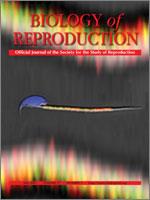Luteal inadequacy is a major cause of infertility in a number of species. During the early luteal phase, progesterone production requires the rapid growth of the corpus luteum (CL), which is in turn dependent on angiogenesis. In the present study, we examined the temporal changes in vascular endothelial growth factor A (VEGFA), fibroblast growth factor 2 (FGF2) and secreted protein, acidic, cysteine-rich (osteonectin) (SPARC) during the follicular-luteal transition and CL development in the cow. Luteal VEGFA concentrations increased as the CL developed but were lower in the regressing CL. Conversely, luteal FGF2 concentrations were highest immediately postovulation in the collapsed follicle and declined as the CL developed. Furthermore, three FGF2 isoforms were present in the collapsed follicle, but only one isoform was detected in older CL. Interestingly, FGF2 concentrations increased in the regressing CL. Western blot analysis for SPARC showed the presence of two isoforms, which were constitutively expressed throughout CL development. Further studies investigated the regulation of FGF2 by LH, which showed that FGF2 concentrations in preovulatory follicular fluid were higher in those animals that had experienced an LH surge. Moreover, LH stimulated FGF2 production in dispersed luteal cells. Conversely, the LH surge had no effect on follicular fluid VEGFA concentrations. In conclusion, FGF2 was more dynamic than VEGFA and SPARC during the follicular-luteal transition, which suggests that FGF2 plays a key role in the initiation of angiogenesis at this time. Furthermore, it is likely that this is stimulated by the LH surge. The results also suggest that VEGFA and SPARC have a more constitutive, but essential, role in the development of the CL vasculature.
How to translate text using browser tools
1 July 2007
Fibroblast Growth Factor 2 Is More Dynamic than Vascular Endothelial Growth Factor A During the Follicle-Luteal Transition in the Cow
R. S. Robinson,
L. T. Nicklin,
A. J. Hammond,
D. Schams,
M. G. Hunter,
G. E. Mann
ACCESS THE FULL ARTICLE

Biology of Reproduction
Vol. 77 • No. 1
July 2007
Vol. 77 • No. 1
July 2007
angiogenesis
corpus luteum
Cow
FGF2
follicle
growth factors
luteinizing hormone




